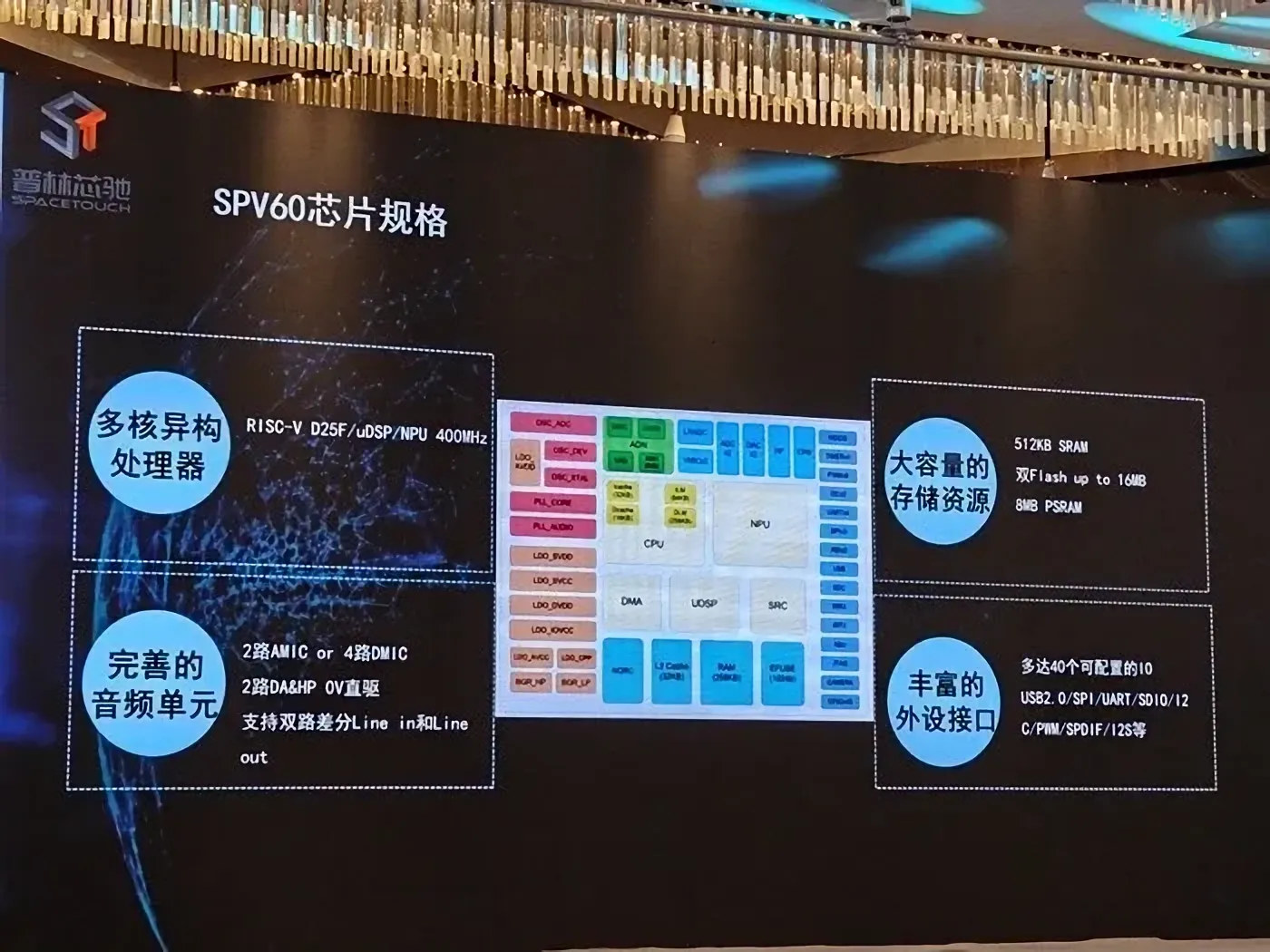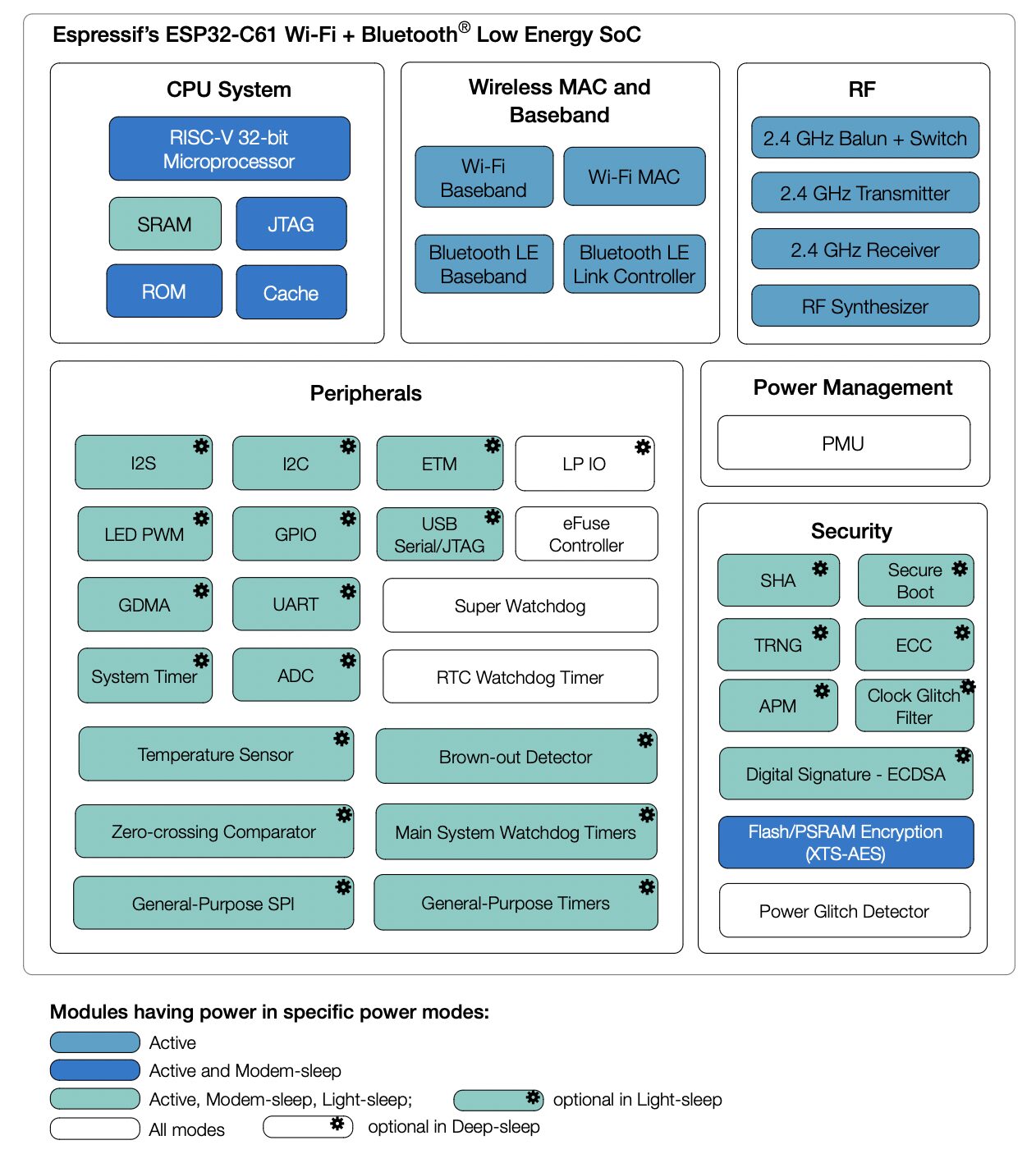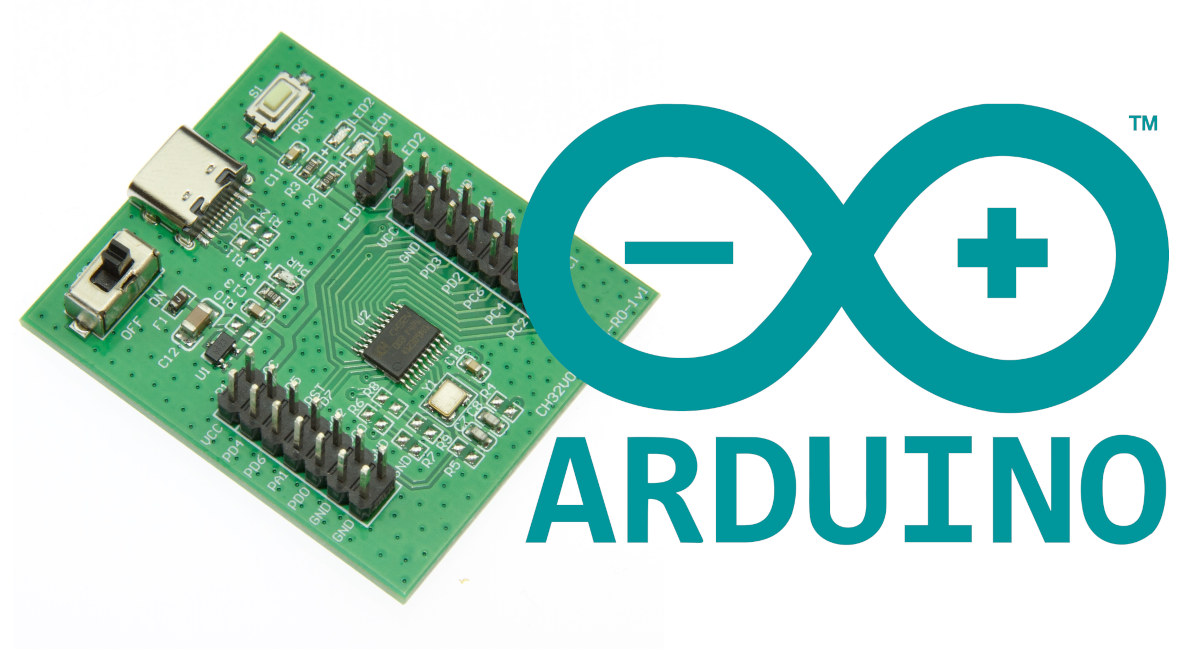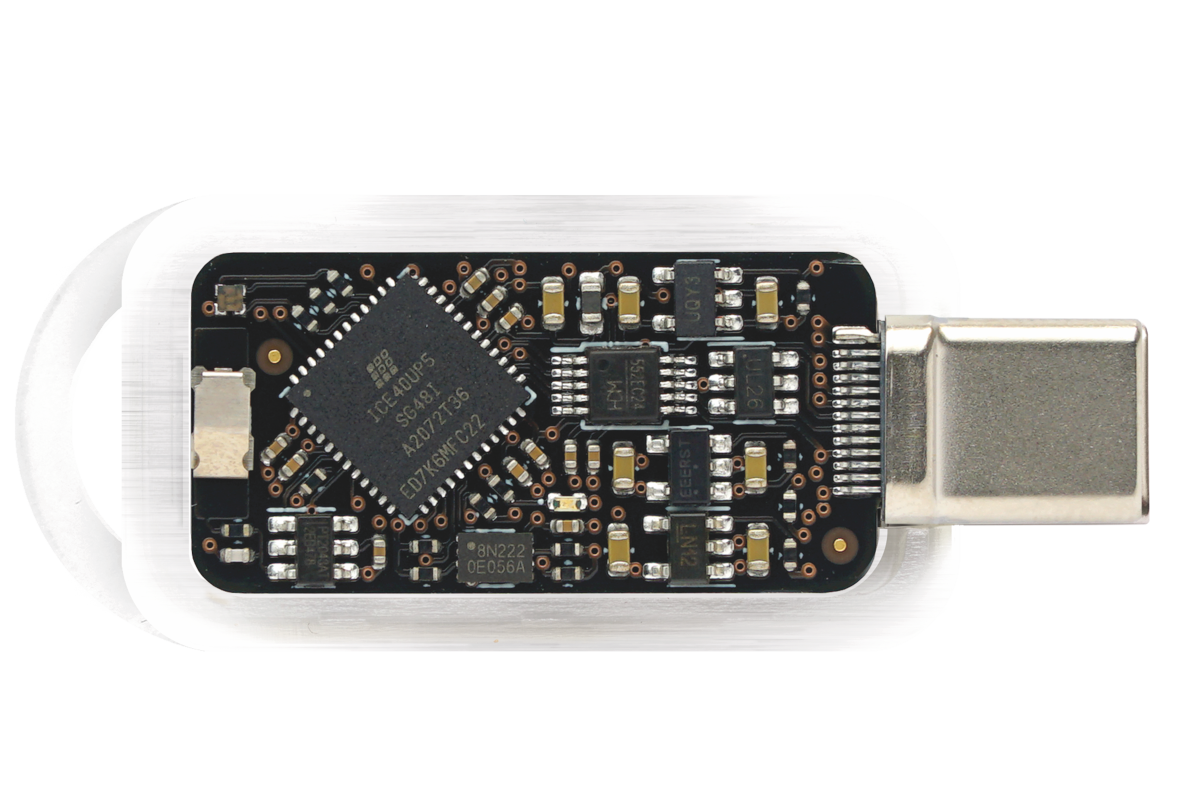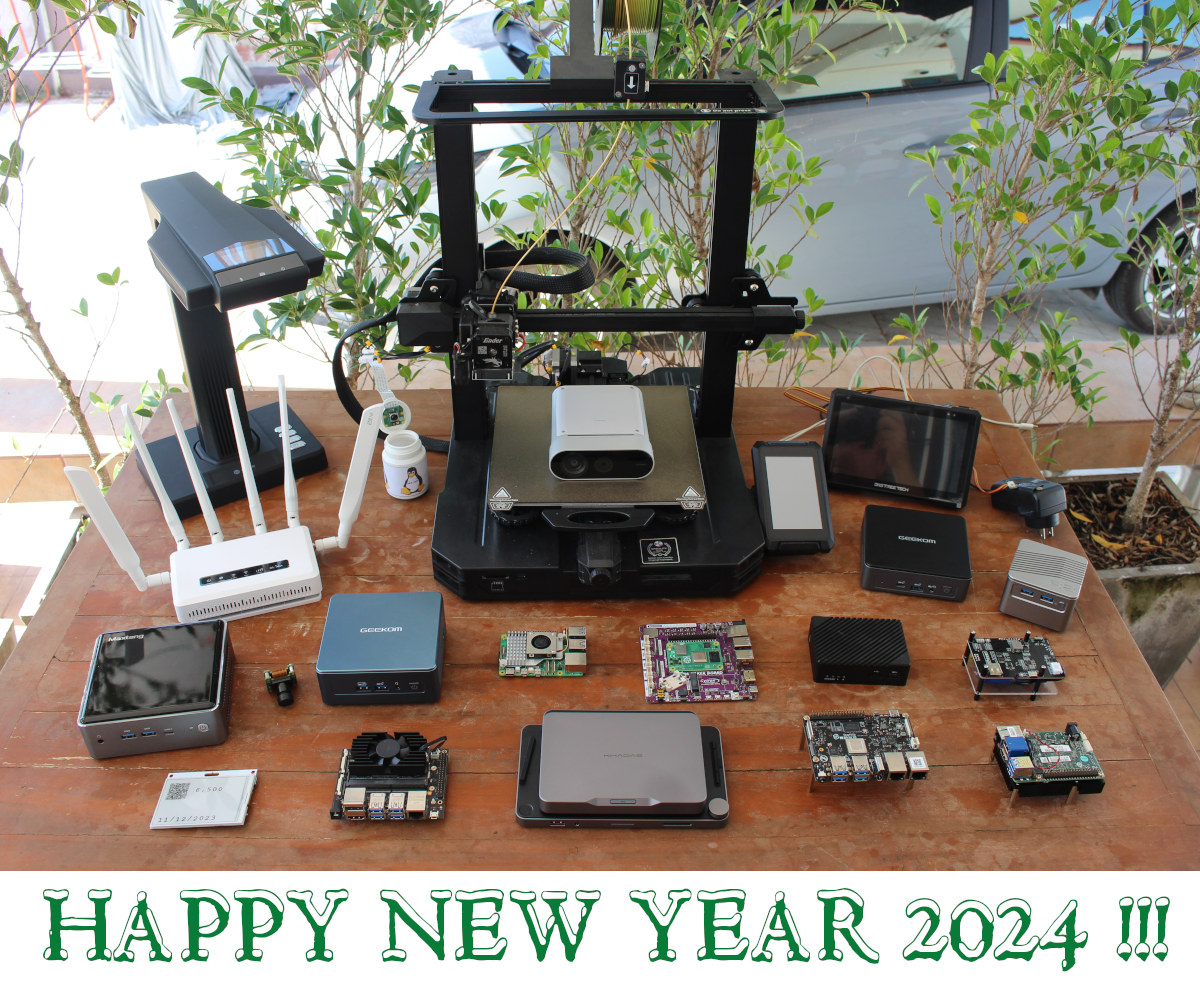Spacetouch SPV60 is a RISC-V AI audio processor with an Andes D25F 32-bit RISC-V CPU IP core with P-extension (DSP/SIMD) that is also found in the Telink TLSR9 wireless audio microcontroller introduced in 2020. But the SPV60 is clocked at a higher 400 MHz frequency, adopts a CPU + NPU + uDSP heterogeneous multi-core architecture with a 100 GOPS AI accelerator and a micro DSP capable of handling 1024-point FFT and iFFT among other mathematical functions, and offers a range of peripherals interfaces such as USB 2.0, SPDIF, I2C, PDM for microphone arrays, and more. Spacetouch SPV60 specifications: CPU Andes D25F 32-bit RISC-V core with P extension (DSP/SIMD ISA) clocked at up to 400MHz 5-stage pipeline Hardware multiplication/division operations Single precision floating point accelerator 32KB I-Cache and 16KB D-Cache; 32KB L2 Cache Spacetouch-designed uDSP – Support for 1024-point FFT and IFFT, FIR, COS, SIN, SQRT, Arctan, LOG, and other functions […]
Lichee Console 4A portable RISC-V development terminal review – Part 1: Unboxing, teardown, and hands on
Sipeed has just sent me a “Lichee Console 4A portable RISC-V development terminal” for review. It’s a quad-core RISC-V mini laptop based on the Alibaba T-Head TH1520 processor with a 7-inch touchscreen display, and my model is equipped with a Lichee LM4A module fitted with 16GB RAM and 128GB eMMC flash. I’ll start the review of the RISC-V developer kit with an unboxing, a teardown, and a quick try with the preinstalled Debian 12 “Bookworm” image, before testing the latter in the second part of the review. The second part will take some time as we have about twenty reviews planned for now, four of which I’ll be taking care of myself… Lichee Console 4A unboxing I received the device in a package indicating I had been sent the 16GB+128GB model and reading “Lichee Console 4A portable RISC-V developer terminal” which makes it clear it’s based on RISC-V, is portable […]
Espressif announces the ESP32-C61 WiFi 6 SoC with improved affordability and wireless connectivity
Espressif has announced the ESP32-C61 SoC, a new ESP32-Cx chip with improved wireless connectivity, and expanded memory options. The ESP32-C61 builds upon the foundation laid by previous ESP32-Cx chips, such as the ESP32-C2 and ESP-C3, and its specifications appear to be quite similar to the ESP32-C6 launched in early 2023, but this SoC also adds support for the BLE Mesh 1.1 protocol and Quad SPI PSRAM at a frequency of up to 120MHz. It supports WiFi 6 on two modes (802.11ax and 802.11b/g/n) and includes a Bluetooth 5 (LE) radio with support for long-range operation through advertisement extension and coded PHY. The TWT (Target Wake Time) feature is supported in 802.11ax mode to save power, as well as OFDMA (Uplink/Downlink) and MU-MIMO (Downlink) for a high-quality, low-latency connection between devices. ESP32-C61 specifications: CPU – Single-core, 32-bit RISC-V microcontroller that can be clocked up to 160MHz Memory: 320KB on-chip SRAM 256KB […]
Linux 6.7 release – Main changes, Arm, RISC-V, and MIPS architectures
Linus Torvalds has just announced the release of Linux 6.7, following Linux 6.6 LTS a little over two months ago: So we had a little bit more going on last week compared to the holiday week before that, but certainly not enough to make me think we’d want to delay this any further. End result: 6.7 is (in number of commits: over 17k non-merge commits, with 1k+ merges) one of the largest kernel releases we’ve ever had, but the extra rc8 week was purely due to timing with the holidays, not about any difficulties with the larger release. The main changes this last week were a few DRM updates (mainly fixes for new hw enablement in this version – both amd and nouveau), some more bcachefs fixes (and bcachefs is obviously new to 6.7 and one of the reasons for the large number of commits), and then a few random […]
WCH RISC-V microcontrollers can now be programmed with the Arduino IDE
WCH has launched some interesting RISC-V microcontrollers in the last year or so, including the “10 cents” CH32V003 RISC-V microcontroller with 2KB SRAM and 16KB flash or the CH32V307with more resources (up to 64KB SRAM and 256KB flash) and additional peripherals. So far they were programmable in C language using MounRiver IDE or an open-source toolchain, but WCH has now announced Arduino support for many of those RISC-V microcontrollers which should enable more people to get involved. The core library for CH32duino works with OpenOCD through WCH-LINKE hardware to download the firmware and debug WCH chips and a riscv-none-embed-gcc toolchain that supports custom RISC-V instructions (half-word and byte compression instruction extensions and hardware stack push/pop functions) found in WCH RISC-V microcontroller. The following evaluation kits are currently supported with ADC, DAC, USART, GPIO, EXTI, SysTick, I2C, and SPI peripherals: CH32V003F4P EVT board CH32V203G8U EVT board CH32X035G8U EVT board CH32V103R8T6_BLACK EVT […]
Tillitis Tkey is an open-source RISC-V security key in a USB-C case
Tillitis’ TKey is a small, simple security key in a USB-C form factor, and described as a “new type of flexible USB security token” that is inspired by DICE (Device Identifier Composition Engine) and measured boot powered by a simple 32-bit RISC-V core, the PicoRV32, in a Lattice iCE40 UP5K FPGA. While we have covered hardware security modules in the past, this is the first security key we have seen that is based on an FPGA running a RISC-V core. The security token lacks persistent, onboard storage, unlike alternatives such as Yubikey Neo. Apps need to be loaded onto the key every time it is connected to a host device. It uses measured boot to generate a unique identifier for each application and is more secure than the alternatives since private keys are not stored on the device. Also, the hardware and software for the TKey are completely open-source for […]
2023 Year in review – Top 10 posts, statistics, and what to expect in 2024
It’s the last day and last article of the year, so we will look at some highlights of 2023, some traffic statistics on the CNX Software website, and speculate what interesting developments may happen in 2024. Looking back at 2023 The semiconductor shortage that had happened since 2020 started to fade away in early 2023, and supplies for most electronics components and devices seem to be adequate at this time, so that was a bright spot this year, and hopefully, it will stay that way in 2024 despite geopolitical tensions. We did not have any super exciting new Arm application processors from Rockchip, Amlogic, or Allwinner announced this year, although the Amlogic S928X penta-core Cortex-A76/A55 CPU started to show up in some 8K TV boxes. The launch of the Raspberry Pi 5 SBC with a Broadcom BCM2712 quad-core Cortex-A76 processor was probably the main highlight for Arm on this side […]
SONOFF iPlug S60 – A $10.9 compact WiFi smart socket with built-in energy monitoring function
SONOFF iPlug S60 is a compact ESP32-C3-based WiFi smart socket with built-in energy monitoring support and available with either Type E/F or Type G prongs for respectively European and British markets, as well as other countries using those types of sockets. ITEAD has manufactured home automation devices that measure power consumption for years, such as the SONOFF POW switch directly connected to the mains or the SONOFF S31 smart socket, but those are/were much larger devices, and the new SONOFF iPlus S60 is fairly small and barely larger than some other smart sockets that lack an energy monitoring function, whiling handling up to 16A or 4,000W at 220-250V. SONOFF iPlug specifications: Wireless MCU – ESP32-C3 RISC-V microcontroller with 2.4GHz WiFi 4 802.11b/g/n S60TPG Plug type – Type G (UK) Input – 250V, 50/60Hz, 13A max Max load – 3,250 Watts Dimensions – 58 x 58 x 42 mm Weight – […]


